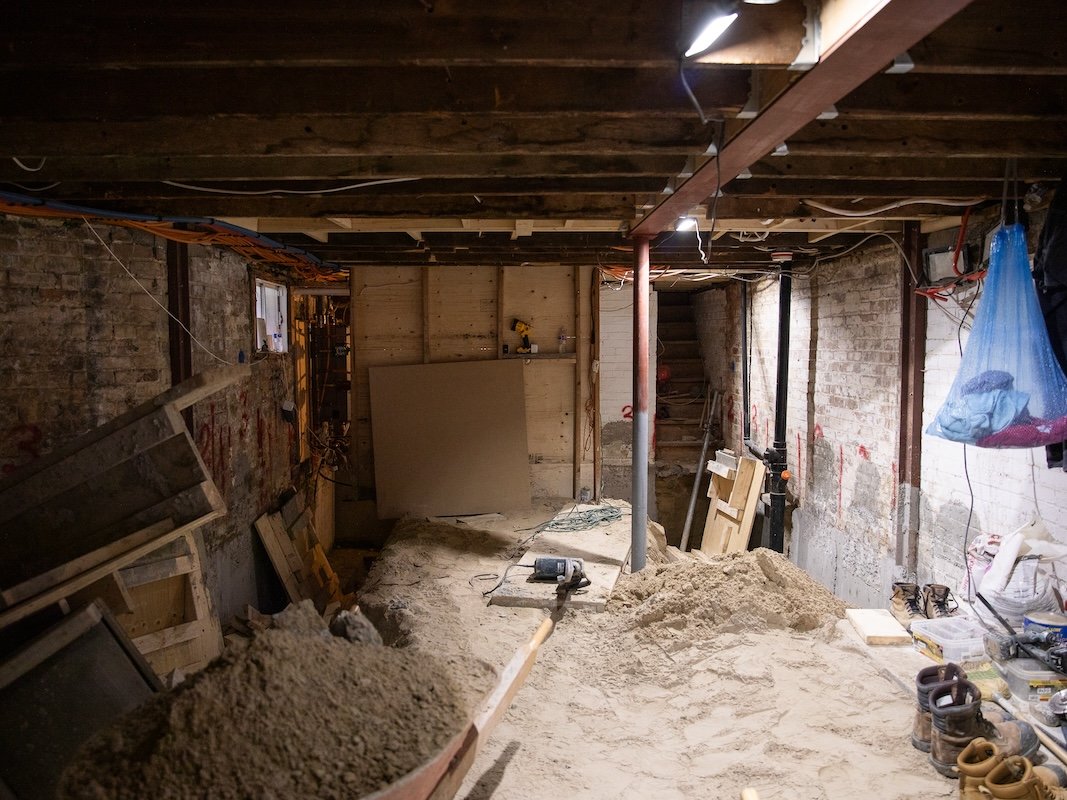Discover Excellence: Toronto Basement Underpinning Services You Can Trust
Discover Excellence: Toronto Basement Underpinning Services You Can Trust
Blog Article
Professional Guide: Just How Cellar Underpinning Can Change Your Home's Structure
Cellar foundation is a substantial architectural endeavor that can have a profound influence on the stability and durability of your home's structure. When considering this transformative procedure, there are crucial aspects to consider that exceed just the aesthetic charm. From determining the signs that your foundation may require underpinning to recognizing the elaborate process involved, each action plays a crucial function in guaranteeing an effective outcome. By checking out the advantages, expenses, and maintenance considerations related to basement support, house owners can make educated choices that will certainly not just boost their residential property yet likewise give assurance for years to come.
Advantages of Basement Support

Additionally, basement base can aid deal with structure concerns such as fractures, clearing up, or bowing wall surfaces. This process maintains and enhances the structure, avoiding further damages and making sure the long-lasting security of the framework. In addition, support can raise the overall value of the residential property, as a reinforced foundation is a preferable function for prospective purchasers and can boost the resale value of the home.
Indications You Required Underpinning

Process of Underpinning Your Cellar
The process of base entails enhancing the structure of a building by prolonging its depth or breadth to give extra stability and support. Before starting the support process, a comprehensive structural evaluation by a specialist designer is critical to establish the ideal support strategy for the particular demands of the building.
Once the evaluation is complete, the underpinning procedure generally begins with digging deep into sections beneath the existing foundation in a tactical way. This is done in controlled phases to prevent compromising the structural More hints honesty of the structure. The next step involves putting concrete right into the excavated sections to develop a new, stronger foundation that gets to higher depths than the original.
Throughout the underpinning process, it is vital to check the job carefully to ensure that each phase is executed correctly. Correct waterproofing and water drainage factors to consider should also be included to prevent any kind of water-related issues in the newly underpinned basement (basement lowering toronto). By complying with these actions carefully, foundation can effectively change a residential property's structure, offering durable security and assurance for home owners
Expense Considerations for Underpinning
Expense factors to consider for underpinning differ significantly relying on the dimension of the task, the picked underpinning strategy, and the structural demands of the building. The cost of underpinning a cellar generally ranges from $1,000 to $3,000 per linear foot. Aspects influencing the expense consist of the deepness of the foundation, accessibility to the site, soil problems, and the need for added structural support.
The selected support technique will also affect the general expense. Standard mass concrete support often tends to be much more affordable for smaller sized jobs, while Recommended Site advanced techniques such as mini-piled foundation or beam and base foundation may be more expensive yet are usually necessary for bigger or even more complex frameworks.
It is vital to get numerous quotes from respectable foundation professionals to contrast expenses and ensure a reasonable rate. Furthermore, take into consideration the long-lasting benefits of a well-executed foundation job, as it can enhance the structural integrity and worth of your residential property in the years ahead.
Preserving Your Underpinned Cellar
Having actually completed the foundation procedure for your cellar, guaranteeing correct upkeep is necessary to preserve the structural integrity and long life of your underpinned structure. Normal assessments are important to detect any type of indicators of water infiltration, cracks, or shifting in a prompt manner. Addressing these issues quickly can avoid further damages and preserve the stability of your underpinned basement.
It is advisable to maintain the cellar completely dry by repairing any leakages and ensuring proper drainage away from the structure. Setting up a sump pump or a dehumidifier can help regulate wetness levels and prevent water damage. Additionally, maintaining constant temperature and humidity degrees can assist prevent issues like mold and mildew development and wear and tear of materials.
Monitoring the condition of the foundation wall surfaces and floorings is likewise essential. If more repair work are needed, any kind of new fractures or changes in the get redirected here structure should be assessed by an expert to determine. By remaining positive and carrying out routine upkeep, you can lengthen the life-span of your underpinned basement and ensure a secure structure for your home.
Conclusion
In verdict, basement underpinning is a transformative procedure that can reinforce the foundation of your home, rise space, and avoid architectural issues. By identifying the indications that base is required, understanding the process included, taking into consideration the prices, and maintaining the underpinned cellar, home owners can ensure the long-lasting security and value of their residential property.
Cellar underpinning is a considerable architectural undertaking that can have a profound effect on the security and long life of your home's structure.Cellar underpinning offers countless benefits for home owners seeking to reinforce and boost the structural integrity of their residential or commercial property's structure.Moreover, basement base can help address foundation problems such as fractures, settling, or bowing walls. Water leakage in the basement, in spite of appropriate waterproofing actions, might be an indicator of foundation concerns that foundation can solve.Having completed the base process for your cellar, guaranteeing correct maintenance is crucial to maintain the architectural honesty and longevity of your underpinned structure.
Report this page